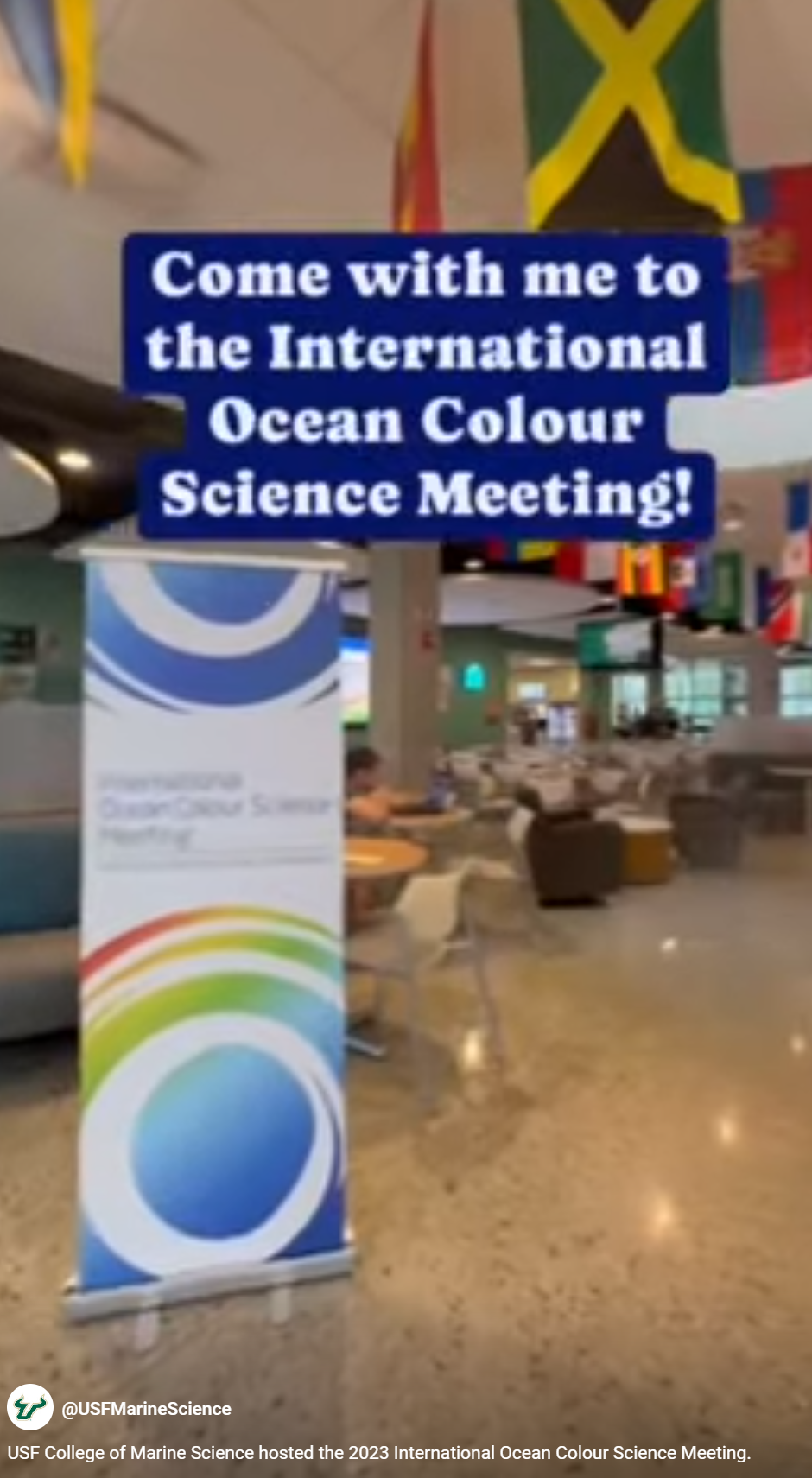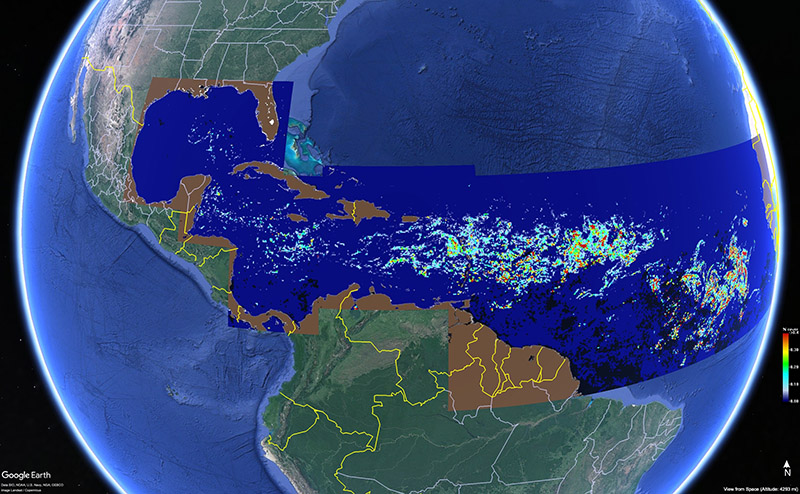Written by: Dyllan Furness, Science Communication Manager, Florida Flood Hub
Hundreds of scientists from around the world gathered in St. Petersburg last week to discuss the latest advances in the fields of ocean optics and remote sensing.
Hosted for the first time by the College of Marine Science (CMS) at USF St. Petersburg, the International Ocean Colour Science Meeting 2023 (IOCS-2023) saw space agencies and other attendees share innovative new research, collaborate on technical reports, and nurture a strong global community for applied ocean color science.
Ocean color science is the study of variations in the ocean’s hues, shades, tints, and tones to better understand marine life and processes. Since the late 1970s, satellite observations of ocean color have helped researchers measure marine algae and productivity, visualize surface currents, and determine the rate at which the ocean sequesters atmospheric carbon. Oil spills, Sargassum inundation, red tides, and other harmful algal blooms can all be monitored through ocean color science.
“There are many applications for ocean color science, ranging from a basic understanding of ocean processes to the management of natural resources, resilience planning, and disaster response.” said Chuanmin Hu, professor and director of the CMS Optical Oceanography Lab, who sat on the meeting’s scientific planning committee and organizing committee. “Meetings like IOCS-23 allow us to plan for the future and make further advances in the fields of ocean color science and remote sensing for the benefit of society.”
IOCS-2023 focused on three themes: new and emerging technologies, new ways of examining ecosystem function, and the societal value and impacts of ocean color science. These themes were designed to foster exchange between the ocean color research community, the user community, and international space agencies that collect and provide satellite data from around the world.
Artificial intelligence (AI), which has seen well-publicized breakthroughs over the past few years, was a prominent topic at IOCS-2023. Researchers presented their work on levering AI to aid in ocean color science.
“Satellite measurements of ocean color involve processing tons of data,” said Brian Barnes, assistant research professor at CMS, who specializes in using satellites to assess coastal and oceanic systems. “Recent advances in machine learning algorithms give us the opportunity to process these data more quickly and efficiently without necessarily compromising on accuracy. Although still in their infancy, emerging technologies like AI are areas of excitement for the ocean color community.”

This week, the USF College of Marine Science hosted experts from around the world for the International Ocean Colour Science Meeting 2023. Click the photo above to view the YouTube short video.
With growing concern about human impacts on marine ecosystems, researchers at IOCS-2023 discussed the ways advances in ocean color science can serve marine biodiversity and ecosystem research.
“Ocean color science began with the study of life, namely phytoplankton, which sustain the marine food chain,” said Frank Müller-Karger, distinguished university professor and director of the CMS Institute for Marine Remote Sensing. “There has been great interest in studying phytoplankton for over a hundred years because we need to know marine productivity and how life changes the chemistry of the ocean. The tones and hues of the ocean — which we can measure using cameras on satellites, drones, and aircraft — give us information to understand and better manage and conserve marine life in all its diversity.”
IOCS-23 was convened by the International Ocean Colour Coordinating Group (IOCCG) in partnership with USF, the National Aeronautics and Space Administration (NASA), National Oceanographic and Atmospheric Administration (NOAA), the European Space Agency (ESA), and other organizations. This was the first meeting convened by IOCCG since 2019.
“The technology used for ocean color science is evolving rapidly, and we continue to make advances to the remote-sensing capabilities of satellites, drones, and other aerial platforms that allow for early detection of certain environmental hazards,” said Tom Frazer, professor and dean of CMS. “The College of Marine Science has long been a leader in interdisciplinary ocean science, and we’re excited to have hosted this important meeting to highlight the benefits of ocean color observations for our communities and economies.”
